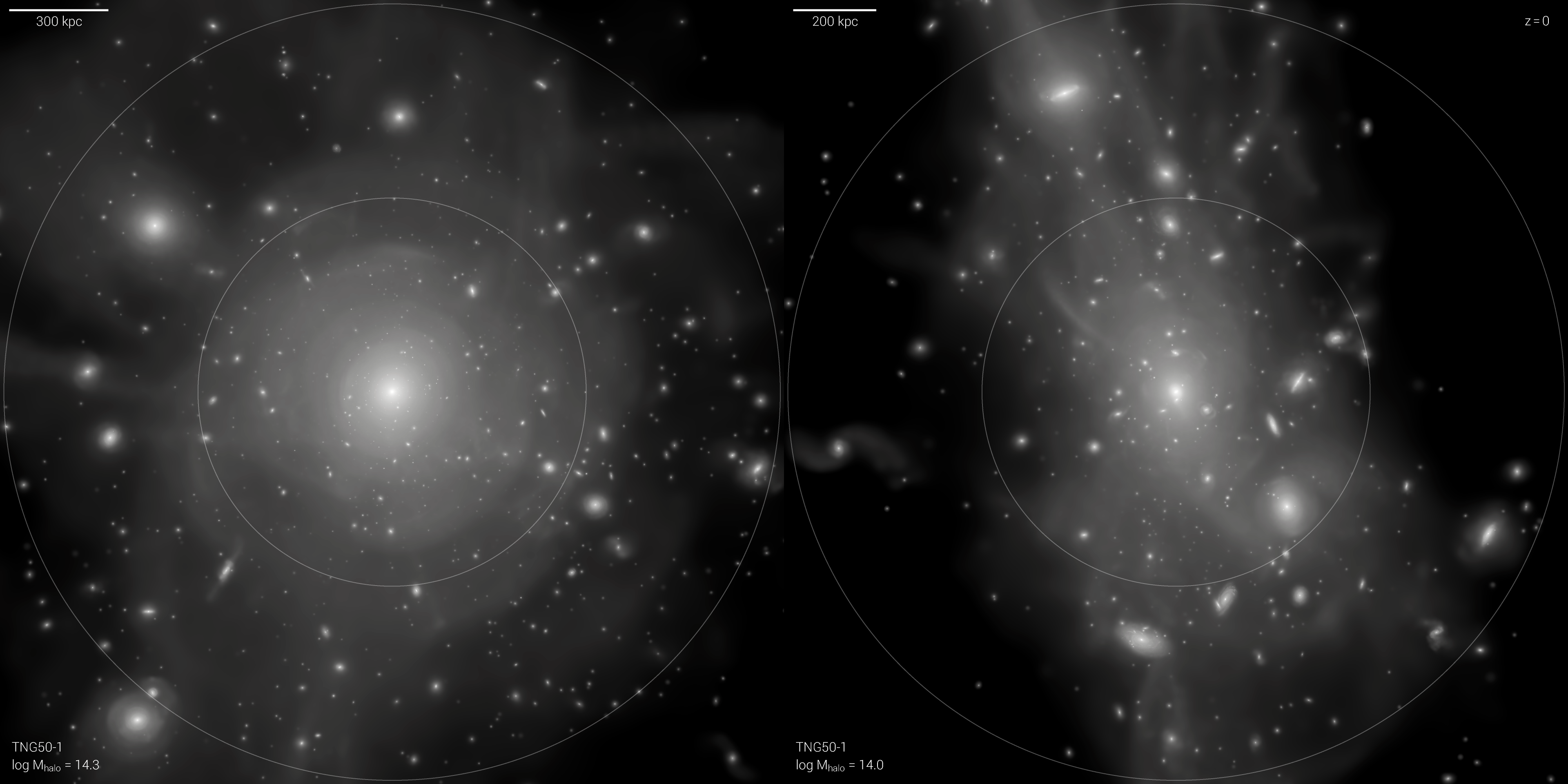The origin of the lensing is low problem
Recent studies have revealed that the bending of light around massive galaxies is significantly smaller relative to theoretical expectations. This finding, the so-called lensing is low problem, has been interpreted as a breakdown of our cosmological model. Now, a team of scientists has found 1 that the mismatch between theory and observations is actually caused by imprecise modeling of astrophysical processes.

Cosmology is a branch of astronomy that studies the properties of the universe as a whole. One of its major discoveries is that dark matter and dark energy make up about 95% of the universe. However, despite their large abundance, dark matter and dark energy still remain among the biggest mysteries in science. To learn about these components, the so-called dark side of the universe, cosmologists measure the bending of light around galaxies. This phenomenon is known as gravitational lensing, and it is caused by the gravitational pull of these galaxies and the dark matter that surrounds them.
On the other hand, astrophysics focuses on the properties of celestial objects like planets, stars, and galaxies. For a long time, it was thought that astrophysics did not play a big role in cosmology because dark matter and dark energy cannot be directly observed. However, this team has found that the relationship between galaxies and dark matter has a greater dependence on galaxy properties than what was previously understood.
According to our best structure formation models, dark matter and baryons collapse together into halos within which baryons then cool, condense, and fragment to form galaxies. We thus expect a well-defined ‘galaxy–halo connection’ sensitive to fundamental aspects of the formation and evolution of structures. Two of the most precise avenues to study this connection are galaxy clustering and galaxy–galaxy lensing. The first refers to the spatial distribution of galaxies, and the second measures the deflection of light from background galaxies by matter surrounding foreground galaxies. Notably, the combination of these observables enables precise measurements of the strength and scale-dependence of galaxy bias, cosmological parameters, and even the law of gravity.
Modern galaxy surveys sample large cosmic volumes with great precision, which enables detailed studies about the galaxy–halo connection. Strikingly, multiple analyses show that galaxy–galaxy lensing measurements around massive galaxies are significantly smaller than predictions from theoretical models fitting their clustering; this is commonly known as the lensing is low problem.
There have been multiple attempts to understand the origin of this problem. A popular interpretation is that it is another face of the tension between growth of structure measurements from the early and late Universe, and therefore a consequence of a more profound inconsistency in the cosmological model. Another venue to decrease the lensingislow tension is to invoke galaxy formation physics.
The researchers studied the origin of the lensingislow using the largest hydrodynamical simulation of the IllustrisTNG suite, which reproduces an extensive range of observables such as the stellar mass function, galaxy colours, and the clustering of star-forming and quenched galaxies. After analysing highly-detailed computer simulations that imitate the distribution of dark matter and galaxies in the universe, they found that the bending of light around simulated galaxies is smaller than what the standard theory predict, analogously to what is found for actual galaxies.
Remarkably, they found that this tension disappeared when accounting for astrophysical effects in the relationship between galaxies and dark matter. Therefore, the discrepancy reflects shortcomings in standard galaxy–halo connection models rather than tensions within the ΛCDM paradigm itself. Specifically, this problem results from ignoring a variety of galaxy formation effects, including assembly bias, segregation of satellite galaxies relative to dark matter, and baryonic effects on the matter distribution. All these effects contribute towards overestimating gravitational lensing, and when combined, explain the amplitude and scale dependence of the lensingislow problem. As a consequence, it is crucial to employ more sophisticated models for the upcoming generation of large-scale surveys.
Author: César Tomé López is a science writer and the editor of Mapping Ignorance
Disclaimer: Parts of this article may have been copied verbatim or almost verbatim from the referenced research paper/s.
References
- Jonás Chaves-Montero, Raul E Angulo, Sergio Contreras (2023) The galaxy formation origin of the lensing is low problem, Monthly Notices of the Royal Astronomical Society doi: 10.1093/mnras/stad243 ↩